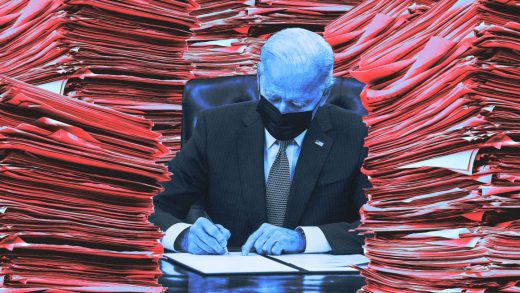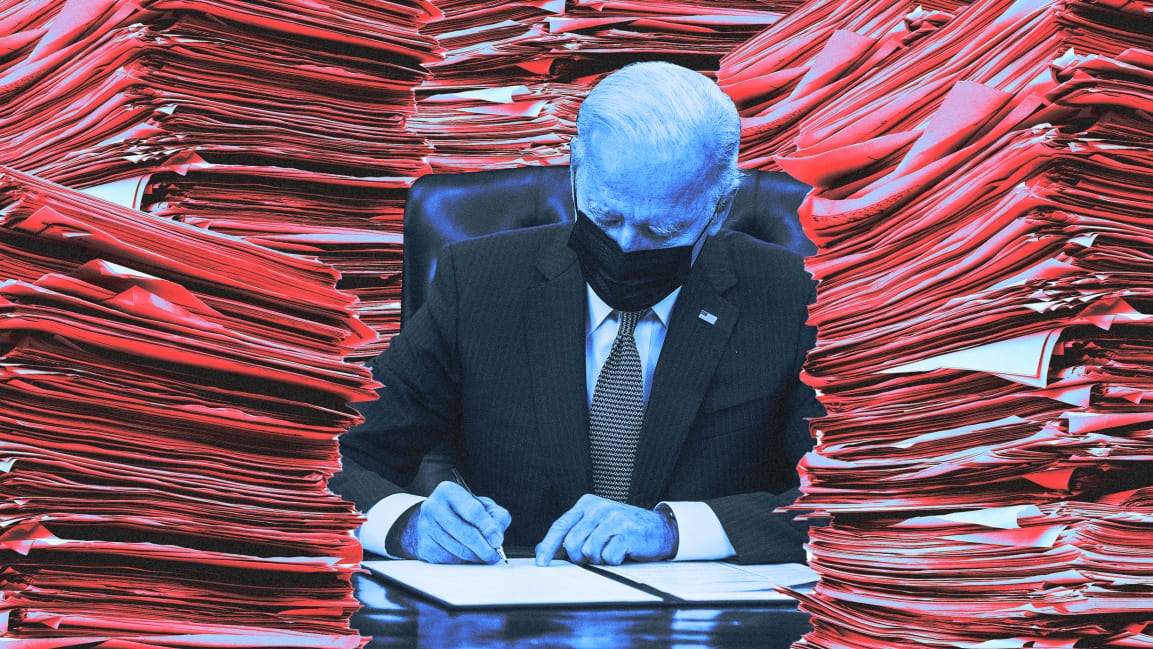Interacting with the government can be a nightmare. Biden’s new executive order aims to change that
Last Monday, the White House published an executive order explicitly focused on improving the ways the federal government works for the American people. From enabling online food and formula purchases for those covered by WIC (a federal nutrition program for pregnant women, new moms, and young kids) to implementing secure online passport renewal, the order is filled with exceedingly practical steps to make life easier for millions of Americans.
In its practicality, it has the chance to be truly transformative.
Officially named, “Transforming Federal Customer Experience and Service Delivery to Rebuild Trust in Government,” this executive order targets 36 customer-experience improvements across 17 federal agencies. Critically, it establishes a process that holds agencies accountable not just for policy outcomes but also for the ways in which they serve the American public.
The idea of giving citizens a voice in making their government work is not new. President Lincoln himself would open the doors to the White House for post-breakfast meetings to better understand how to serve a fledgling nation of 31 million.
But as the distance between the White House and the people has grown over the years, so has the space between policy makers and the American people. This executive order is the first step in what will likely be a multiyear (or even decade-long) effort to shorten that distance and regain the nation’s trust in our government.
This isn’t the first effort of its kind. From the Clinton-Gore administration’s Reinventing Government initiative to several Obama-era executive orders designed to cut red tape or build trust between the federal government and communities, administrations have attempted this before. But this executive order does include some very specific commitments and a clarifying command to the bureaucracy: Focus on customer service.
Imagine a world in which interacting with government is simple, seamless, and maybe even pleasurable. This is the world the executive order not only asks us to imagine, but also takes the critical step of defining how federal agencies will get there, especially over the next six months of planning and initial implementation. There are plenty of great ideas on where to start. One example: Currently, people with certain lifelong conditions like autism–conditions that will not change–must recertify their condition to maintain SSI eligibility. Eliminating or changing this requirement is among the early ideas being spurred by the order.
Spurring action is actually the first step. And while the order doesn’t come with dollars attached, it does establish the need for intense improvements as an administrative priority, and it lays out a pathway for accountability.
Here are just a few ways the order could bring exciting changes to everyday experiences for many of us:
Online and On-Time Services
Bills, Bills, Bills
One of the oft-cited frustrations of students, business owners, and unemployed workers—especially during COVID-19—was the ability to easily apply for government help and track their application status. The executive order takes this reality into account: Students who are Direct Loan borrowers will now have a single repayment portal on StudentAid.gov; farmers will be able to digitally apply for loans from the Department of Agriculture; and agencies like the Small Business Administration may be able to reduce call-center wait times for small business owners.
Fewer Trips, Fewer Trip Wires
A common trip wire among Americans seeking disaster relief or using multiple public benefits is a very practical one: They simply have to be in too many places at once. People often have to work with multiple agencies at the same time—some of which require in-person interaction, mailing or faxing verifications, and collecting forms like birth certificates. This results in frequent trips to a government agency, post office, or clerk; travel time and transit costs; and, at times, missing work. Consider someone trying to get assistance after a natural disaster has leveled their home. Or a parent between jobs, trying to claim a tax credit and applying for unemployment benefits. The people doing all the right things are drained of time and resources for too little payoff.
And have you moved? Ever? Consider how many times you had to report that change of address and, perhaps, your incredulity that none of the systems seemed to communicate. Per the order, “Individuals who move their residences can update their addresses one time with the Federal Government and choose which other Federal or State entities they would like that information shared with.” Hallelujah, amen.
Tara Dawson McGuinness is the founder and director of the New Practice Lab at New America. Hana Schank is a senior advisor for public interest technology at New America. In 2021 the pair released Power to the Public, a book about how governments can solve public problems in the digital age by working directly with communities.
(31)



